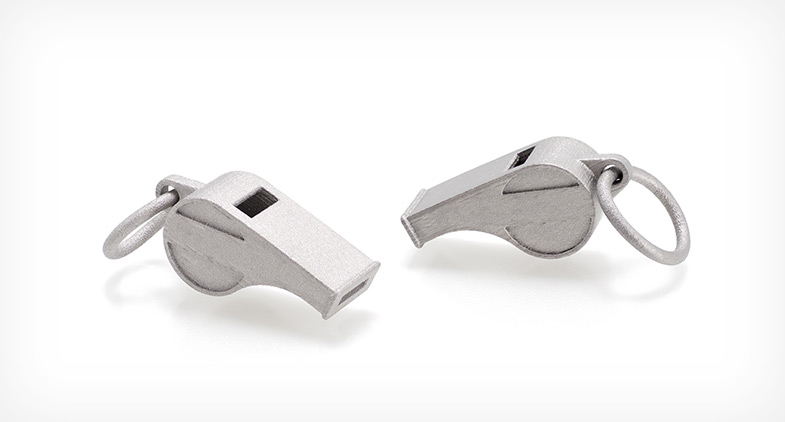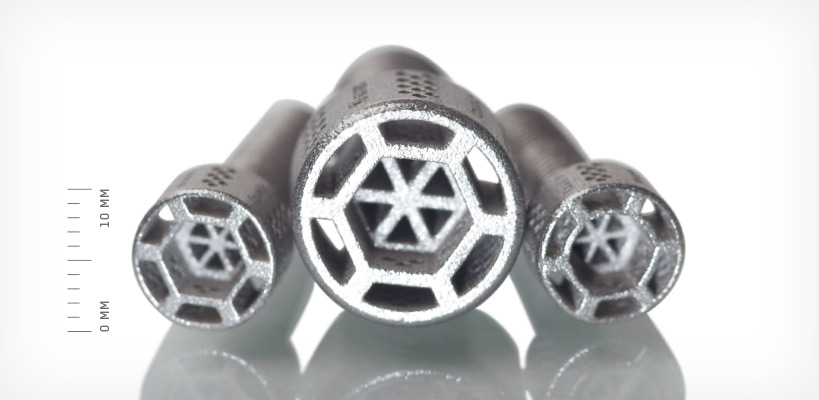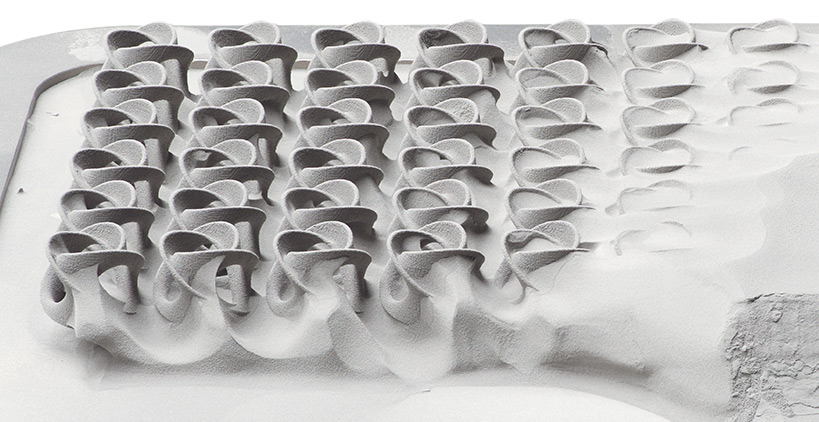Interview with Christian Lönne on Höganäs Digital Metal: “Making Real Products for Real Applications”
Developed by a small team in Sweden, Höganäs’ Digital Metal technology is a relative unknown in 3D printing. Höganäs itself makes a lot of the powder for metal powder bed fusion systems, as well as metal injection molding (MIM) and other technologies. The firm is the leader worldwide in metal powder manufacturing and has been around since 1797. Now privately held by two family foundations, Höganäs can afford to take a more patient long-term view when compared to publicly held firms.

Traditionally quite conservative, it was both a bit of a shock and utterly logical when Höganäs acquired the tiny startup Digital Metal. The firm had few options with a promising technology that needed significant investment to be productized and become viable in a market dominated by emerging well-funded players. Höganäs was local with a lot of relevant expertise and a global footprint. It was a vertical integration move that could have ramifications for Höganäs’s work and relationships with original equipment manufacturers (OEMs) in both 3D printing and beyond.
I once worked for a firm where a rumor spread that a global leader would make a similar vertical move within its own value chain, and the result was utter chaos. We had to engage in what we call in Dutch “panic football,” and we spent months fighting perceptions, mistrust, and confusion. For an established firm to make such a move, it is not a decision one can take lightly, in my limited experience. In Dutch we say, “you shouldn’t go over one night’s ice.”
Acquiring a powder-based OEM was, therefore a bold move that was not without risk. At the same time, a powder dispenser company being acquired by a powder maker (a local one to boot!) has an inexorable logic to it. For a while there, Höganäs seemed to be wavering on what to do with its new asset: would it deploy it as a service? Develop machines? How will it enter the market, and with what focus? The wavering came to an end with the appointment of Christian Lönne as CEO.
Christian is a perceptive and accomplished executive with experience with large firms such as Ericsson, Sony, and in leading startups. He has this carefully bold touch, which is similar to how Höganäs is; qualifying everything, being thorough, but not afraid to be fearless when the situation demands it. He told me in an interview that it is his task to lead a “startup within an established firm” and take a “viable technology” and “speed it up, improve it and make it widely used and adopted.” Now, Digital Metal is “no longer a startup, a completely new technology.” Now, it is a “process that we use, is stable…and yes, the technology will still evolve,” while “we’re at the middle of the innovation S curve.” “Digital Metal is at a commercial-stage now,” and Höganäs should “grow the company commercially.” “We’re now interested in creating new partnerships” and to “co-develop and co-create” and “we need to work together.”

He says that “Höganäs comes from the technology” and that, from 2015 to 2020, the company “fine-tuned Digital Metal.” The main difference between Höganäs’ path is a “focus on systems in mass production…making real products for real applications.” “Just increasing productivity without control is not an attractive proposition,” and they’ve made over “500,00 parts” in house to help them obtain the level of control and repeatability that they now have. Indeed, even though Digital Metal is relatively unknown, stories have percolated through the industry for years about companies reportedly using it to make millions of end-use parts.
With regard to their relationship with their parent company, Christian says that even though they are “a 100 percent owned subsidiary, we work and operate independently.” They are “in the same city, but in their own building.” They can “use the extensive networks and expertise that Höganäs has” especially their “extensive experience powder metal and significant metallurgical knowledge.” Through “utilizing Höganäs’ fundamental experience..in processes for powders and knowledge of binder and sintering,” they now have a “stable owner who is solid, patient and has invested in the technology over the years.” “We started off in Europe, and now we have machines in Asia and North America” and are working towards an eventual “global market footprint.”
The company is developing “different materials and helping customers qualify them” working toward “qualifying three to four materials this year” because “the universe of materials used in machines must become bigger.” They “will be releasing copper D2 tool steel,” as well as other materials, but more importantly, “we develop and take responsibility for that process.”

The firm is not investing in the entire process chain, however. As an example, he cites furnaces and other ancillary equipment. “We don’t do furnaces..instead, we work with the best furnace providers.” Digital Metal has traditionally been a service. That was useful “since we did learn a lot about printing, production from that.” Now, they’re looking at productizing this through selling their DM P2500 printers while maintaining the service for customers who want more productivity.
In terms of where they will invest, “we have a clear plan to increase productivity.” Still, the most important thing is to do this “while maintaining precision and quality…we need to be a quality manufacturer and the leader in precision.” Uniquely “all of our systems to date have been upgradable” and we can “retroactively upgrade all systems, so far,” with “one of the first machines, is today still in serial production.”
The printer costs around 500,000 Euro, and, even though “the price has gone down,” they realize that “only high productivity applications make this machine interesting.” It can do a “100 cubic cm of parts per hour, and this will increase to 260 cubic centimeters per hour.” Whereas a number of industries are using Digital Metal, they have a real “sweet spot now” with clients who want “tens of thousands of parts”—in particular, “manifolds, lots of nozzles, strainers, fine meshes, and very small parts.” Depending on part size, “one build could be hundreds of parts,” but, of course, there is a bit of a difference between “nozzles and rocket engines.”
Generally, however, the client base comprises of the usual suspects in aerospace and the like, but, uniquely, also a lot more deep industrial applications, such as in “component suppliers and OEMs.” 3D printing is an iceberg with so much of the industry below the waterline and Digital Metal especially makes a lot of parts that are not often mentioned in everyone’s PowerPoint slides. “Our market is quite scattered, and industries that we serve vary..from academia and institutes to developing with industrial customers serial production of a part.” Some parts are cases where “every part is unique,” but they also do true serial parts where all the parts are identical. “We focus on consistent precision in mass production,” where “repeatability and reliability are very important.”

For additive, Christian still thinks it’s better to “rethink your parts, to look at different properties,” instead of just a one-on-one method of “let’s look at this part, can you replace it with 3D printing.” If you do that, “it is not optimized and you’re copying the older technology.” So a lot of their work “is making people understand the true benefits of 3D printing.” To make that easier, they’re looking at things such as a “simulation and cost quoting tools” to give people a better idea of the costs.
In this phase of the additive industry, consisting of “a technology looking for the applications”, Christian takes the long view. “If we were looking at online shopping 20 years ago, it didn’t take. ‘Why buy clothes from the internet?’ is what people were saying.” “It will take time do learn how to design components, to learn of the benefits,” but then there will be a “massive impact on supply chains” and “people won’t go back” until then “we need persistence.” Now “we need to provide value, real customer applications, real products, and we need to lower TCO.”
Subscribe to Our Email Newsletter
Stay up-to-date on all the latest news from the 3D printing industry and receive information and offers from third party vendors.
You May Also Like
Gorilla Sports GE’s First 3D Printed Titanium Cast
How do you help a gorilla with a broken arm? Sounds like the start of a bad joke a zookeeper might tell, but it’s an actual dilemma recently faced by...
Nylon 3D Printed Parts Made More Functional with Coatings & Colors
Parts 3D printed from polyamide (PA, Nylon) 12 using powder bed fusion (PBF) are a mainstay in the additive manufacturing (AM) industry. While post-finishing processes have improved the porosity of...
$25M to Back Sintavia’s Largest Expansion of Metal 3D Printing Capacity Since 2019
Sintavia, the digital manufacturing company specializing in mission-critical parts for strategic sectors, announced a $25 million investment to increase its production capacity, the largest expansion to its operations since 2019....
Velo3D Initiates Public Offering in a Bid to Strengthen Financial Foundations and Drive Future Growth
Velo3D (NYSE: VLD) has been among a number of publicly traded 3D printing firms that have attempted to weather the current macroeconomic climate. After posting a challenging financial report for 2023,...































